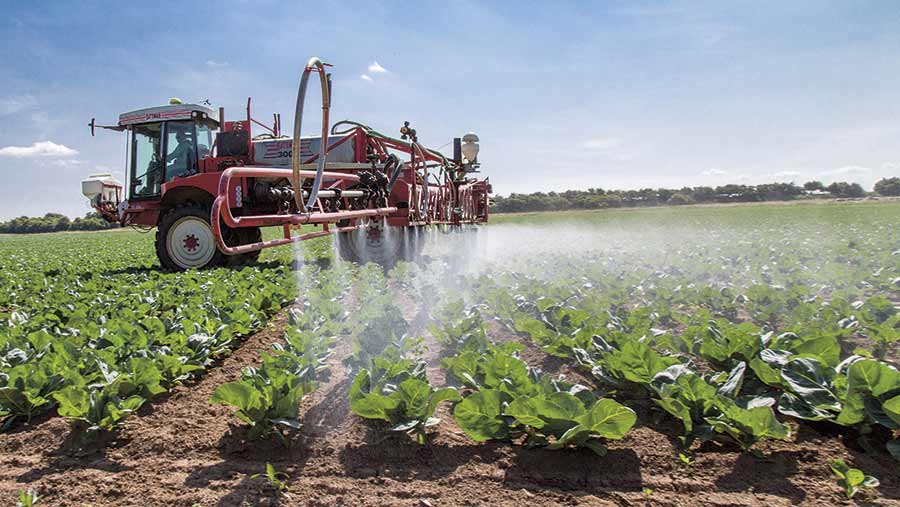How key fungicide change affects spud and veg growers
 © Gary Naylor
© Gary Naylor Changes to the label of multipurpose fungicide product Amistar this season will have an effect on potato, vegetable and salad crop disease spray programmes.
The product now has a full label approval for the control of Alternaria solani – commonly known as early blight – in potatoes. This is becoming an increasingly serious disease threat in UK spud crops.
See also: Watch out for illegal pesticides, farmers warned
Growers will be able to use up to three foliar applications of the azoxystrobin-containing product in blight programmes to protect against A solani, which tends to appear in stressed crops from July.
Overall removed
However, the approval to apply 6 litre/ha of Amistar to seed-beds before planting for the control of soil-borne pathogens black dot and rhizoctonia has been removed.
Instead, growers will have to rely on a 3 litre/ha in-furrow approval for the control of these diseases, which can be particularly troublesome for pre-pack growers looking for a clean and bright skin finish.
Crop additions
Previously, the use of Amistar in some vegetable and salad crops required an Extension of Authorisation for Minor Use (Eamu), but the new label sees the addition of several of these on full approval, including lettuce, endive and chicory.
Manufacturer Syngenta states that salad crop additions have a maximum total dose of 500g/ha/year, so if growers are multicropping, this could have use implications.
Brassica changes
Use of the product in brassica vegetables has been simplified, with a treatment window between GS16-49 covering Brussels sprouts, cabbage, cauliflower, kale, collards, broccoli, and calabrese.
Previously, there was a range of growth stage recommendations across crops.
Like salad growers, brassica growers can now only apply a maximum total dose of 500g/ha of active a year.
Allium applications
Onion growers now have their total number of permitted applications reduced from four to three, with a minimum interval of seven days between applications, while garlic and shallots have also been added to the label.
For carrot crops, applications have also been reduced from four to three at minimum seven-day intervals and a new harvest interval of 14 days has been added.
Buffer zone
It should be noted that for all crops, Amistar is now Lerap B, so carries a 5m reducible buffer zone around watercourses.
The changes see a different label appearing on new packs to reflect the new approval, rather than a change in Mapp number. Growers have until August 2018 to use up stocks of product carrying the old label.
Those wishing to use old-label product for the new extended uses can do so, but must download a copy of the new authorisation letter from the Chemicals Regulation Directorate (CRD) website.
Don’t trip up when using tebuconazole
There is a vast number of straight tebuconazole formulations on the market, with several important differences in how they can be used.
As such, growers and agronomists are advised to check the label of the product before purchasing to ensure it is approved for the receiving crop and it is understood how the product should be used.
In cereals, for example, some tebuconazole products have an earliest application timing on the label and others do not, while there are also clear differences in frequency of application, dose rate and application window.
For oilseed rape, some products will be approved for autumn use and others not. In addition, it is typically the case that a product cannot be used in the spring if an autumn application has been made.
Linseed and beans
If approved in the crop, linseed and beans typically have an earliest application timing, but not in all cases and there is much variation on where this information can be found on the label, so it might easily be missed.
In addition, various crops have been removed from tebuconazole labels in recent months – particularly in the vegetable sector – so ensuring the relevant crop is on the label is crucial.
This highlights the potential pitfalls when using any tebuconazole formulation, which could result in a breach of law or affect subsequent use in fungicide programmes.
Pesticide Watch
Farmers Weekly is working with Gatekeeper agronomists to highlight key pesticide rule changes and the potential implications, keeping you on the right side of the law and aiding on-farm record keeping.

